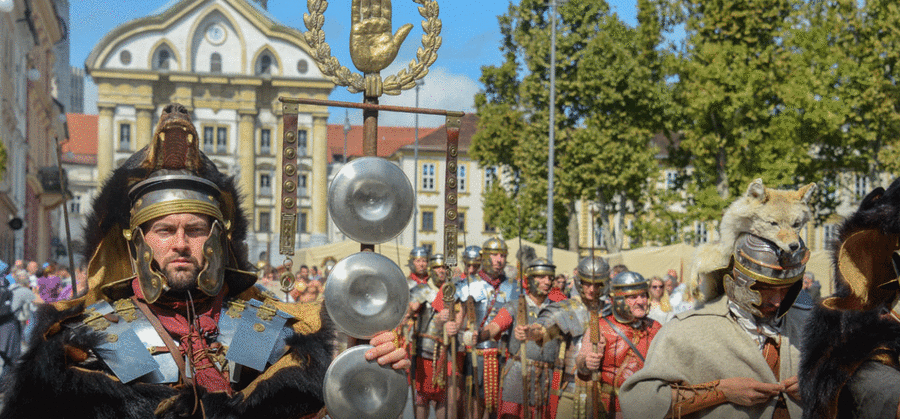The city of Emona
On the territory of the present Ljubljana, the Romans built first a military encampment around the year 50 BC, and later a permanent settlement called Iulia Aemona (Emona). As a strategic stronghold playing an important role in numerous wars, Emona was fortified with strong walls. It had a population of 5,000 to 6,000 people, mostly merchants and craftsmen, including a number of government officials and war veterans. Its streets were paved. The houses were brick built, centrally heated and connected to a public sewage system. Their walls were plastered and painted in different colours, and their floors covered in mosaics. Emona was, among other things, an important Early Christian centre with a flourishing trade. It had its own goddess, Equrna, worshipped at the Ljubljana Marshes. Emona fell into a decline along with the Western Roman Empire.
The migration of nations
In 452 it was torn down by the Huns led by Attila. The decades of the great migration of peoples saw the twilight of the city. Slovenians' Slav forefathers arrived in the territory of the present Ljubljana at the end of the 6th century and started building a settlement under the secure shelter of the present castle hill. The settlement gradually turned into a medieval town.


